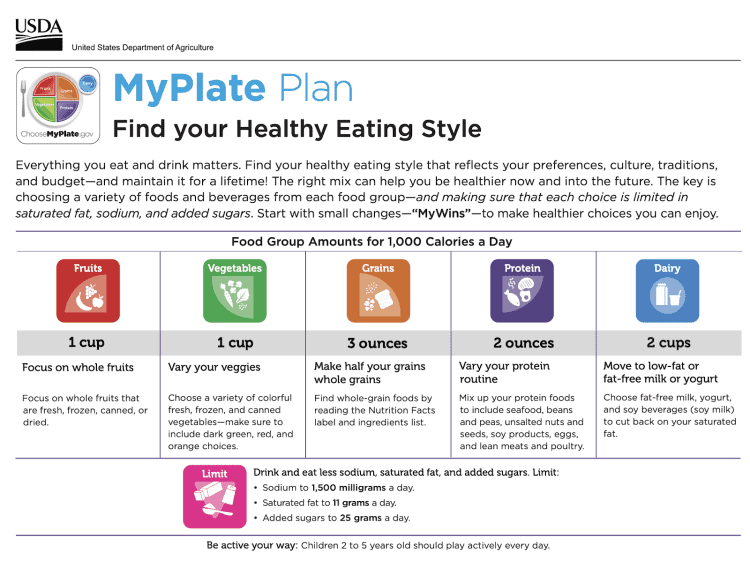Food Pyramid for Toddlers
Feb 05, 2020, Updated Apr 02, 2024
This post contains affiliate links. Please see our disclosure policy.
Do you remember learning about the food pyramid as a kid?? I remember learning it, and then promptly not caring about it AT ALL because I didn’t want some triangle telling me what foods to eat. Because I was a kid and I just wanted pop-tarts and Lucky Charms.
Guidelines have changed a lot since then, but people still wonder about the food pyramid for toddlers (as in, what to feed when they move past the baby stage and are done with bottles and boobs!) They’re a real human now, eating “real people” food, and it feels like you’re feeding them ALL THE TIME.
So, what should a toddler eat?
Enter: the food pyramid for toddlers!
What is the food pyramid for toddlers?
Real quick, just in case you didn’t grow up with this food group framework, it’s worth explaining that the food pyramid for toddlers is another way of breaking down the nutritional requirements of toddlers and kids ages 2-5. They’ve since changed it to MyPlate, and no longer use the pyramid depiction. It lists the official daily needs guidelines as per the USDA, as they relate to the food groups.
There are 5 food groups for toddlers and kids, which are:
It can be a really handy guide, and it’s great to keep in your toolkit as you go about meal planning and preparing food for your kids.

How To Use the Food Pyramid for Toddlers
A few notes when considering the Food Pyramid for toddlers:
1. I’m still calling it the Food Pyramid even though it’s no longer called that by the USDA because people search for it on google, so I’m just trying to help everyone find the right info.
2. This is a guide and NOT a prescription. Your child may eat more or less than these amounts on different days (or always), and I do NOT suggest limiting or restricting them in any way. Read this post to understand more about that.
3. The 1,000 calorie suggestion is an average amount for this age, but in reality, your toddler’s eating will likely vary widely. Don’t be surprised when some days it’s less than that, and some days it’s more.
4. You do want to offer a balance of food groups at meals as much as possible, but it is expected for a toddler or preschooler to heavily favor carbohydrate foods. That’s totally ok!
Even as a dietitian, I never measure or count my kids’ food to make sure they get enough from each group. I do a mental checklist in my head instead of what I’m offering. Fruit and/or veggie? Check. Some sort of starchy carb? Check. Meat or non-meat protein? Check. And I always aim for a healthy fat, too.
What about fats? Are they good for toddlers and kids?
Interestingly, both the old food pyramid and the MyPlate plan totally skip over fat, besides saying to limit saturated fat. But I kind of disagree with this. Fat is brain fuel! We need it, and so do our kids. And as long as we stick to the right amounts of the healthy fats, they can totally have them.
Here are the fats I recommend for toddlers:
- Avocado
- Nuts and/or seeds (either as nut butter or ground up and sprinkled on things).
- My go-to favorites are peanut butter, almond butter, sunflower seed butter, ground cashews (often stirred into yogurt), ground walnuts mixed into breading (like for chicken tenders or crusted fish), and ground flax and chia in oatmeal.
- Butter (Not exactly a health food but there are much worse things, and I’m okay with a little butter every day)
- Cooking Oils. I like avocado oil, olive oil, coconut oil, and sunflower oil
- Coconut butter (Warm it up and it becomes liquid. SO GOOD on toast!)
- Fatty fish, like salmon
- Cheese
- Whole milk
- Whole milk yogurt
- Egg yolks
More On the 5 Food Groups for Toddlers
Fruits (#1) & Veggies (#2)
Fun fact: fruit offers the same nutrients as veggies.
I’ll be honest, my kids don’t get close to 1 cup of veggies most days, because there are only a few veggies they like. That’s normal for toddlers. Instead of stressing over what they’re not getting, I recommend focusing on veggie exposure (read this post for ideas) and letting go of the pressure of eating a certain amount.
Fresh vs. Frozen
For both fruit and veggies, fresh is great, but frozen and canned are healthy choices too. Just watch out for unnecessary added salt and sugars. (Freeze dried fruit is also a GREAT snack for toddlers, and doesn’t have any added sugar).
Here are a few things to look for when you’re shopping:
- Canned Veggies: Low or no added salt
- Canned/Packaged Fruit: “Packed in 100% juice or water” (not syrup!)
Grains
Grains (also known as starches and carbohydrates) are a super important (and generally preferred) food group for toddlers.
And even though we all know of certain diets that try to vilify them, it’s important for you to know that grains are NOT bad, for you or your kids, in any way. Our bodies actually rely on the type of energy that grains provide for a lot of things. Your toddler needs that energy to run, play, and grow, among other things.
Big Note Here: You do not have to do 100% whole grain for everything. You want to make sure they’re getting a good amount of whole grains (some ideas below), but it’s okay if they have that boxed mac and cheese or wonder bread sandwich once in a while.
Here are my top choices for toddlers:
- Oatmeal
- Low sugar cereal (grab my guide here)
- Rice (white, brown, wild)
- Quinoa
- Barley
- Farro
- Bread (we typically do either whole
grain bread or sourdough, but get what you like!) - Corn
- Potatoes
- Sweet potatoes
- Winter squash
- Pasta
- Whole grain waffles or pancakes
Of course there are others beyond what’s listed here, but that’s the basis of a healthy rotation of varied grains.
Protein
Notice the daily recommended amount is only 2 ounces of meat(around 2-3 tablespoons), which is a really easy amount for your little one to get! That means you don’t need to overthink protein sources for your toddler.
Also, protein doesn’t necessarily mean meat! If your toddler doesn’t eat meat (either because they don’t want to, or your family chooses not to), that’s okay. In that case, I highly recommend reading this post so you know how to provide all the nutrients that come from meat in other ways.
Dairy
This category includes milk, yogurt, and cheese.
How much dairy to give a toddler:
I suggest limiting milk to 16 oz (the equivalent of 2 cups) a day, but if they eat a lot of other dairy, you may even cut back to one cup a day. This is because too much milk can fill them up and prevent them from getting a good variety of other necessary nutrients. It can also increase picky eating.
What types of dairy to give a toddler:
- Until your child is 2 years old, serve whole milk. Note: Even if you reduce the AMOUNT of milk you give your toddler for the reasons explained above, don’t switch the TYPE of milk they get under they’re older. I do NOT recommend fat-free milk for toddlers.
- Once your child is 2 years old (or older), you can choose to continue with whole, or switch to low fat.
For more about milk, see this post.
Want to learn more about what to feed your toddler?
Here are a few of my favorite resources:
- To figure out how much they should be eating, read this post or watch this video.
- For easy, balanced meal ideas, check out my Meal & Snack Survival Guide! It includes lists of low-prep recipes so it makes for the easiest, fastest, healthiest meals!

Want even more information, check out these posts:
The 48 Best Healthy Snack Ideas for Kids and Toddlers
How Much Sugar is Okay for Toddlers?
Healthy Meal Plan for Picky Eaters














The pyramid is formed by sorting from bottom to top, in proportion to how much of each food element our body needs. This pyramid shows whether the daily food and nutrition needs are being met.